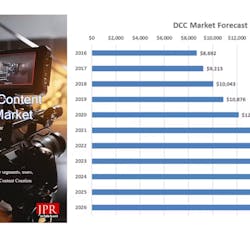According to Parks Associates, U.S. broadband households highly likely to cut the cord in the next 12 months watch more than six hours of video content on their mobile phone a week, compared to 2.5 hours among all U.S. broadband households. The research house says fixed broadband providers that do not offer mobile services are particularly susceptible to cord-cutting among their current subscribers. Parks believes these market trends drove Comcast (NASDAQ:CMCSA) and Charter Communications (NASDAQ:CHTR) to introduce mobile services as a way to extend their service-based product portfolios.
"Roughly 10% of broadband subscribers are likely broadband cord-cutters, with half of them highly likely to make the change in the next 12 months," said Brett Sappington, senior research director and principal analyst at Parks Associates. "Many are satisfied with their current provider overall, but these subscribers are aware of the other options available to them and could become actual cord-cutters if their current service does not continually meet their needs."
The research house says two-thirds of broadband households currently subscribe to a cable Internet service, three in 10 subscribe to DSL or fiber, and one-third use mobile data services. Verizon, AT&T, and Frontier are the largest providers of DSL and fiber-based fixed-line services.
"Potential broadband cord-cutters rely on their mobile devices for entertainment," Sappington said. "They are significantly more likely to watch live video content via mobile, including live TV broadcasts and livestreaming, averaging an hour more per week each compared to average broadband households. As 5G mobile and 10G fixed broadband services start to deploy, the substantial performance improvements will be attractive to this segment of subscribers, which will drive many providers to match these offerings in order to achieve parity in competition and messaging."





